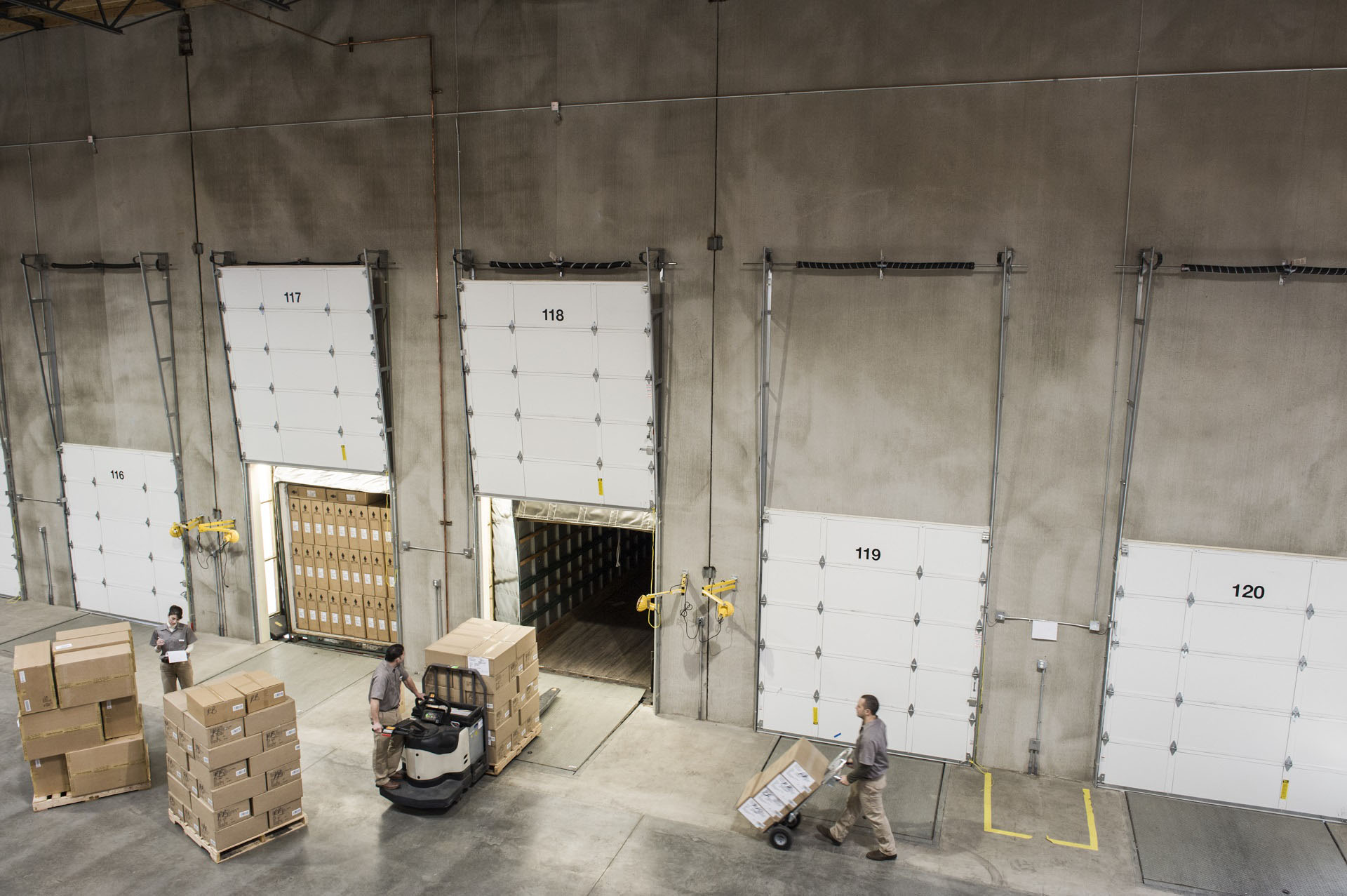
Road transport is an essential link in many production processes and therefore an integral part of many industries. A significant proportion of the products, transported by delivery trucks, are packed on wooden pallets, which are subject to mechanised loading and unloading. Various types of loading platforms and storage ramps are commonly used to enable the stored goods to be moved efficiently and placed in the delivery vehicle.
What is a dock leveller?
The dock leveller is the link between the driving surface of the storage facility or loading ramp and the vehicle loading compartment. A dock leveller that functions as a mobile ramp can be manufactured in a number of ways, but in principle it performs a similar role, it allows a forklift truck to enter the vehicle loading bay freely. In general, dock levellers are made of steel with a zinc coating to protect the structure from corrosive effects of the weather, or alternatively of aluminium. The following chapters will discuss the forms that the dock levellers have.
Types of dock levellers
One type of a dock leveller is manual bridges and flaps. They are mainly used where a loading and unloading system with an integrated drive cannot be used. Such dock levellers can be easily integrated into a new or existing building. Manual bridges, as the name suggests, do not require electrical power – one of the primary means of lowering these types of heavy metal flaps is through the use of a spring system. So-called spring-loaded bridges are based on a principle that weight of the flap being lowered is counterbalanced by the tension of the springs, allowing the mechanism to be moved without significant force. These systems are characterised by their compact size, fairly low installation requirements, no energy consumption and fairly low operating cost. They can be installed as sliding or stationary bridges. There are also very small portable ramps – these, however, are characterised by their low load capacity and size due to the need to move them manually and therefore limited adjustability.
Another type of dock levellers are electrically powered systems, similar to the above mentioned manually operated solutions. Similar in form and shape to the previous ones, this dock leveller, attached to a steel beam at the edge of the ramp, forms a transport link between the fixed driving section of the loading area and the semi-trailer of the delivery vehicle. These systems differ in their form of propulsion, which in this case uses electrically controlled hydraulic cylinders.
Considering types of handling ramps, it is worth broadening the search to include systems commonly used for loading directly from the warehouse floor via system loading docks. Theloading dock is a component of the hall that is integrated into the body of the building and consists of a handling ramp and a door. The dock door is often fitted with a so-called apron, which is a plastic cover for the dock door that acts as a kind of airtight buffer between the delivery vehicle trailer and the warehouse building, ultimately preventing excessive cooling of the storage area when the dock door is opened, increasing the comfort of the forklift operator, but at the same time increasing the hygiene of the loading and unloading operation by protecting the goods being handled from exposure to precipitation. The solution to the loading and unloading process using dock doors requires that the area in the loading and unloading zone (dock area) is lowered sufficiently so that the delivery truck backing up under the dock door is almost perfectly level with the hall floor. The remaining height difference, together with the horizontal drop between the floor and the vehicle loading deck, is bridged by a suitably adapted dock leveller system integrated into the loading dock. A distinction can be made between dock levellers with a swing lip and dock levellers with an extending lip. Both solutions, while requiring electrical power on one side, guarantee efficient handling and streamline the loading process. The dock levellers used in handling docks are sturdy structures that carry high loads.
Dock levellers – application and price
As mentioned above, handling systems such as dock levellers, handling bridges or handling ramps are commonly used in any type of industry using road transport. They are therefore commonly used in logistics centres, warehousing facilities as well as industrial plants, where the receipt of raw materials and the dispatch of the processed product are key to the operation of the plant. The price of a dock leveller is an important aspect that affects the choice of the final handling solution. There are manually as well as electrically operated solutions, fixed and mobile. Manually operated solutions as well as those in which the platform is fixed are among the cheaper ones. Sometimes, however, a drive-through solution may be more cost-effective if, for logistical reasons of loading organisation, we know that the number of vehicles loaded at the same time is limited and we want to be able to regulate the loading area from the ramp level. It should be borne in mind that while the number of adaptable solutions may be limited in the case of existing buildings, there are correspondingly more possibilities in the case of newly designed buildings. It is therefore worthwhile, when thinking about both the redevelopment of an existing facility and the construction of a new industrial facility, to choose an experienced contractor who will be able to adapt the handling solutions to be efficient and safe.



